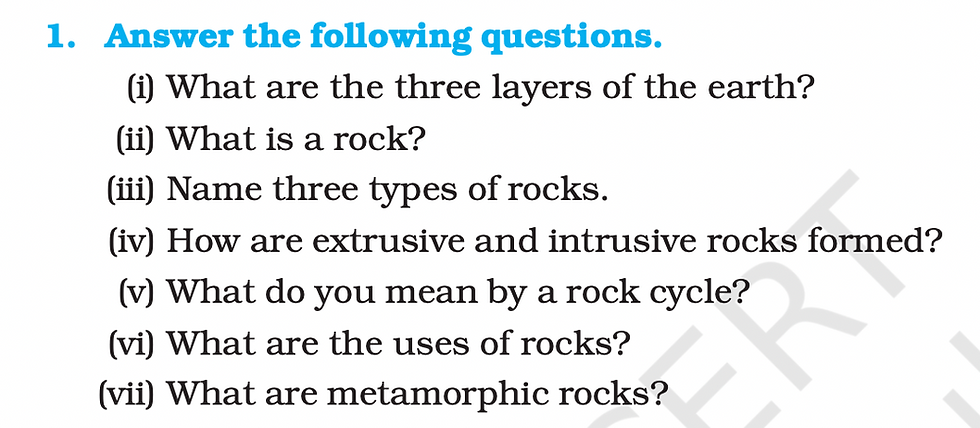Competency-based education…
- Things Education

- 1 day ago
- 4 min read
…starts with ‘Essential Ideas’.

Hello all. Welcome to the 139th edition of TEPS Weekly!
A recent newspaper article about competency-based assessments brought back into focus the CBSE’s shift from rote learning – it has increased the percentage of competency-based questions in Class X Board Exams to 80%. (We dug deeper and found that the CBSE circular about this is actually more than a year old, published on 3 April 2024.) The circular states that 50% (not 80%) of the questions will be competency based.
We agree with the general concern raised by the article – that we have not sufficiently supported and trained teachers for this shift. The circular linked above states that ‘The Board in accordance with National Education Policy, 2020 has taken multiple steps towards implementation of Competency Based Education in schools, ranging from aligning assessment to competencies, development of exemplar resources for teachers and students as well as continuous capacity building of the teachers etc.’ It is true that the Board has, over the years and many projects, put out several useful resources, but in our experience, schools and teachers are largely unaware of these.
In today’s edition, we write about one such resource that should form the foundation of teacher workshops on competency-based education.
Before we dive in, we recommend that you read a previous edition of this newsletter on Competency-Based Assessments for an overall understanding of this concept.
Essential Ideas
‘Essential Ideas’ was included by the CBSE as a core element of competency-based assessments. The Learning Frameworks for Grades 11-12 include Essential Ideas. As an example, have a look at Page 109 and onwards for Grade 11-12 Geography here.
Unfortunately, no Essential Ideas were created for Grades 1-10 – and so we are here to explain what these are, how to create them and why they will be useful for all grade levels.
Ms. Rathod is a Grade 7 Geography teacher, and today she will teach Chapter 2 – Inside Our Earth. Her focus is on completing the syllabus, and she believes that learning is shown by remembering facts. She reads the chapter out loud, gives crisp explanations of new concepts and instructs students to complete Q1 in their notebooks.

Everyone works silently and independently as Ms. Rathod walks around to check their work.
Later that evening, on reading the newspaper article about competency-based assessments, she gets curious and asks ChatGPT to generate a couple of questions. Here are the questions:
Ms. Rathod is immediately concerned – her students know how to memorise definitions and facts, but these questions require them to apply their knowledge. How can she teach differently to prepare her students for such questions? How can she plan differently? Where should she even start?
She should start with determining the Essential Idea of the chapter.
What is an Essential Idea?
The Essential Idea of the Grade 7 Geography chapter ‘Inside Our Earth’ is:
Earth’s internal processes create and transform its surface continuously.
A unifying thread: To students, the chapter can feel like three distinct sections or concepts: layers of the earth, types of rocks, the rock cycle. This Essential Idea ties them together conceptually – the same internal forces that create the Earth’s layers also transform rocks over time.
A reflection of the subject’s core: At its heart, Geography helps students understand how the Earth works as a living system, shaped by both internal and external forces. This Essential Idea reflects that core disciplinary understanding.
A foundation for higher learning of the subject: This Essential Idea lays the groundwork for later geographical and scientific thinking. When students later study plate tectonics, erosion, or resource formation, they can connect those topics back to this same idea of Earth’s internal forces shaping its surface.
A foundation for thinking and application: This Essential Idea invites students to think like young geographers – to ask how and why things happen, not just what they are called.
So, when creating an Essential Idea for a chapter, you should ask yourself four questions:
Does it act as a unifying thread for all concepts in the chapter?
Does it reflect my subject’s core?
Does it serve as a foundation for higher learning of the subject?
Does it serve as a foundation for thinking and application?
If you answer YES to at least 2 out of 4 of these questions, you know that you have a strong Essential Idea.
How does it help with competency-based learning?
With this Essential Idea in mind, Ms. Rathod starts the chapter by helping students see that the Earth is active and changing inside, not still, and that this activity and change connects every topic – layers, rocks and the rock cycle. She creates learning outcomes based on the Essential Idea, and she uses them to plan learning experiences that make students apply this Idea – not just recall names of rocks, but explain how they form and transform. We will write about the pedagogy in more detail in future editions.
Some more examples
Do these Essential Ideas meet at least 2 out of 4 of the criteria?

If you’d like to organise teacher professional development sessions on Essential Ideas conducted by TEPS, reach out to us at +919898469961 or info@things-education.com.
If you found this newsletter useful, please share it.
If you received this newsletter from someone and you would like to subscribe to us, please click here.
Edition: 4.46






Comments